Dealing with stress
What is stress?
When we are experiencing difficult and challenging times, such as the current COVID-19 pandemic, it is normal to feel:
worried or concerned about loved ones, especially if they are at risk of illness
worried or concerned about your personal health and safety
concerned that health care services may be disrupted
socially isolated or sometimes lonely, especially when living alone
bored, tired, or lacking energy, and you may not feel as productive as usual
uncertain about the future and not be able to focus or concentrate on making plans.

We consequently experience a range of emotions, like fear, sadness, anger, numbness, helplessness, and hopelessness. These can manifest in many physical, psychological, and social signs.
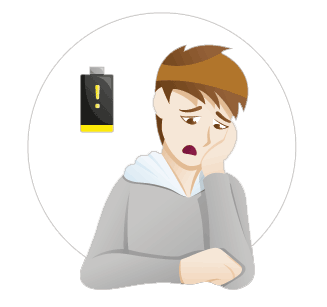
Physical
- Headaches, tremors in hands, increased heart rate
- Muscular pains/aches
- Cold sweating
- Tiredness, sleep disturbance, decreased appetite
- Gastrointestinal problems
- Persistent pain without any apparent cause, or pain above the level of what you may expect from an injury
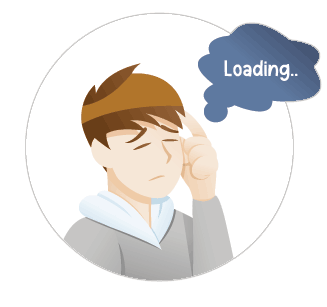
Psychological
- Impaired concentration and decision-making, anxiety, recurrent thoughts or memories
- Forgetfulness
- Irritability
- Worry, sadness or crying, loss of pleasure from usual activities
- Tearfulness, anger
- Guilt/survivor shame
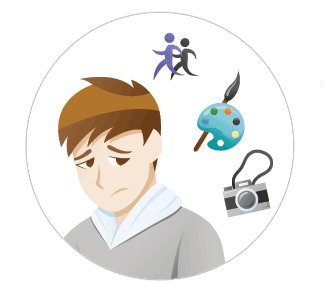
Social
- Social withdrawal
- Inability to perform day-to-day tasks
- Increased conflict with family or community members
- Inability to perform well at work/difficulties in school.
- Misuse of medicines or substances (e.g. smoking, alcohol, cannabis, etc.)
- Lack of interest in usual activities
REMEMBER!
Stress can motivate us and enhance our performance. But problems can occur if these emotions and feelings persist and start to negatively impact our life.
Negative thoughts and feelings may lead us to think about:
giving up
blaming others
judging ourselves harshly
unpleasant memories
what will happen in the future, especially what we fear
our concern for other people
When we are overcome by negative thoughts and feelings … it affects our behaviour.
We often start doing things that make our situation worse like spending too much time in bed, smoking or drinking.
For many of us, our reactions to a stressful situation change over time. However, for some of us, signs that we are struggling continue and they negatively impact how we live our daily lives, perform at work or they affect our relationships with family and friends. This is not because we are weak, or are to blame for what we are experiencing.
Rest assured that you are not alone, and many other people feel the same.
❯ NextSo, what can we do?
Strengthening social support
In general, we tend to cope better when we have friends, family members, community and mental health support groups around us. We need to think about how we might be able to strengthen our social support networks.

REMEMBER that strengthening social support can mean different things for different people. It may mean:
- Having a friend or family member listen and validate your concerns and emotions.
- Connecting with a community organization, group or agency that is providing needed and appropriate information and support.
- Seeking advice or practical help from people around you to complete a difficult task.
- Spending time with others but not necessarily talking about problems (e.g. sharing a meal).
- Listening to and helping other people (while not forgetting to take care of oneself).
By asking for other people’s support, you may feel:
- more confident and hopeful in dealing with problems
- better able to manage your problems
- less burdened by problems
- comforted by someone’s care and support, and feel that you are not alone.
There is a proverb that reflects the idea of social support, “A problem shared is a problem halved.“

"We told you a little bit about the importance of social support. Now, we can help you think and plan for a way to get some social support from someone you trust."
Plan exactly what you are going to do (e.g. call the person)
Be sure to break this plan down into small, manageable steps
Decide what day you will do this
What will you tell the person/organization?
Using reminders might be a helpful way of making sure that you complete the desired tasks. For example, using alerts on your mobile phone, matching tasks with community activities or mealtimes, or having a friend or family member keep you accountable are all excellent ways of helping you complete the tasks.
So, what can you do?
You can take actions to promote your own mental well-being. Put things into perspective. Remember that you are human after all. It is normal to experience feelings of distress, sadness, fear, confusion and anger in times of crisis, and having those feelings does not mean that you are weak or that you cannot do your job.
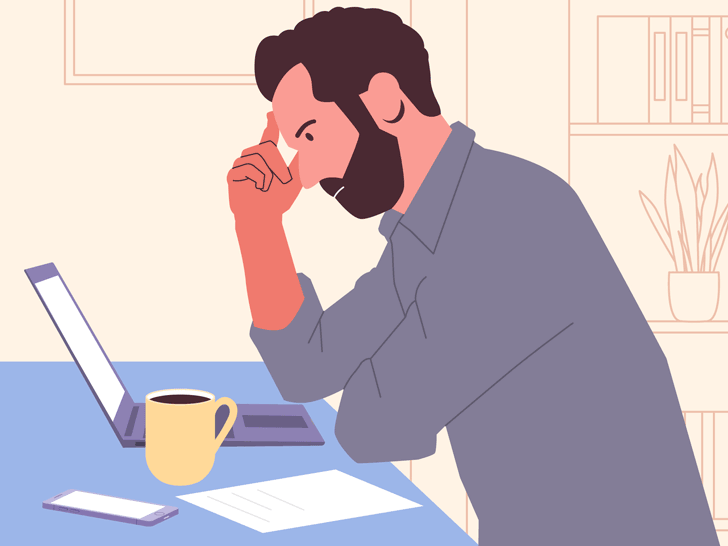
- When you have difficult thoughts and feelings about your job or your capacity to cope, try to take stock of which things are within your control, and which challenges you have no control over.

- It may also be helpful to spend some time each day recounting a few of the things you have accomplished, as it can sometimes be easy to forget what went well during times of high stress.

- Finally, remember to be kind to yourself just as you would be to a friend or colleague in the same situation.
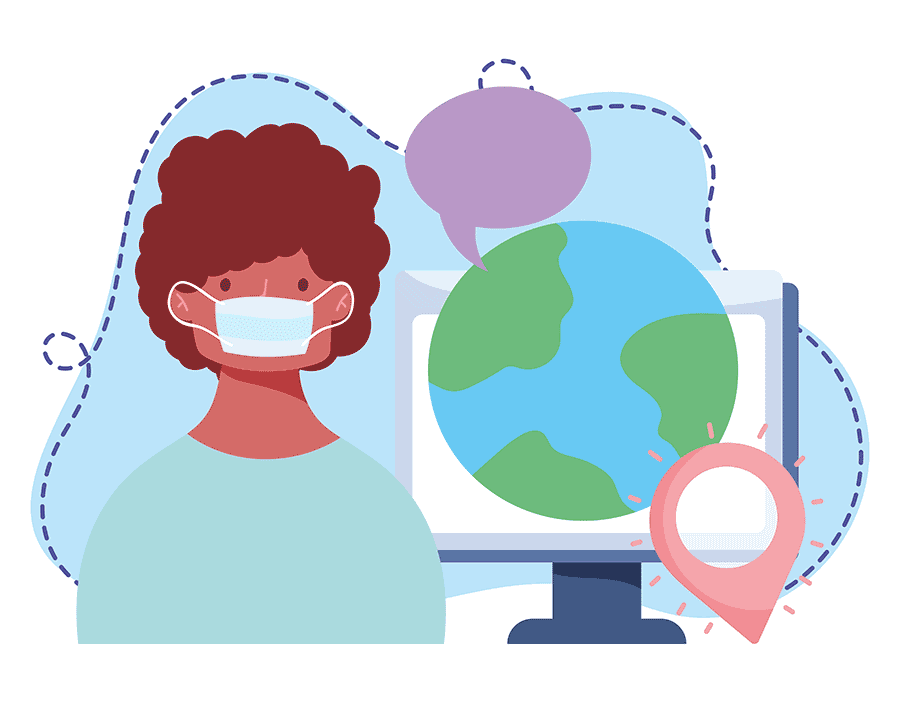
Stay informed
- Seek information from reliable sources such as WHO and your local health authority on topics such as case identification, infection prevention and control measures or any topic relevant to your role as a responder.
- You may also wish to consider taking an online course from a trusted provider.
Avoid information overload
As you try to stay informed, remember not to overload yourself with news. A constant stream of news about the COVID-19 pandemic may leave you feeling overwhelmed and agitated.
- Try to limit your exposure to media coverage as much as possible, including limiting time spent on social media.
- Avoid sources of unverified medical information and do not listen to myths and rumours.
- Avoid looking at your phone first thing in the morning, try using an old-fashioned alarm clock instead.
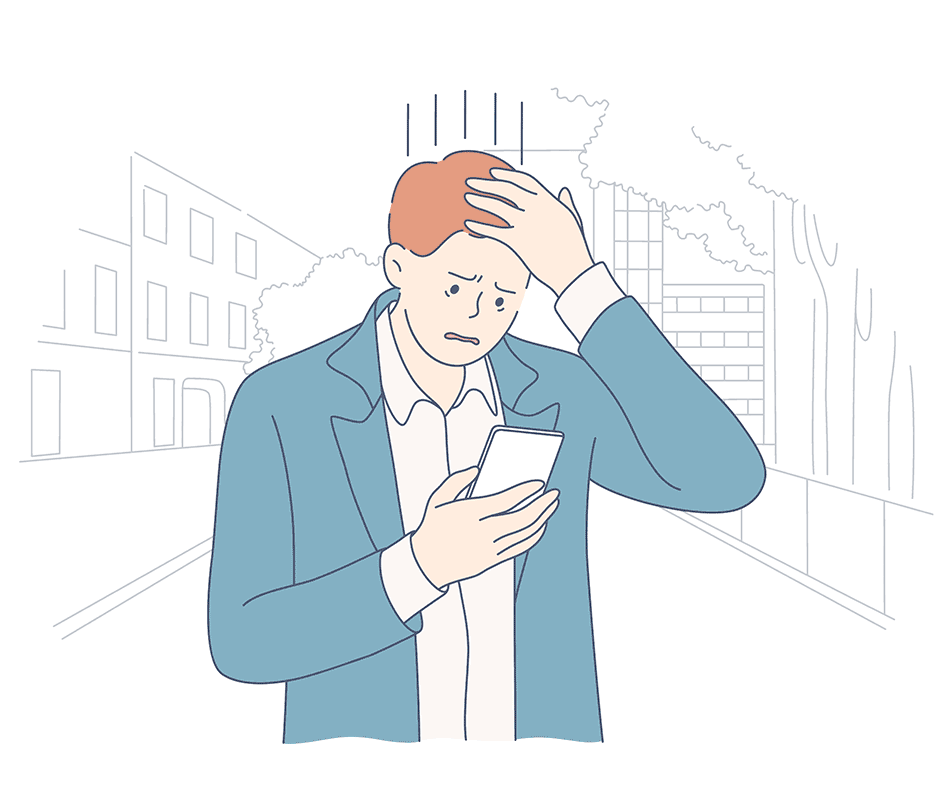

Stay connected
Despite physical distancing measures, make sure you stay in touch with your support system during this crisis. It is normal to feel the urge to withdraw from social circles during stressful times but staying connected helps you cope.
- You can reach out to friends and family members via text or video chat, and join meals and social activities virtually.
- Try to exchange support with trusted colleagues at work, as many of you may be having similar experiences and reactions.
- You could try creating a formal or informal platform where you and your colleagues can share knowledge and discuss any dilemmas you are facing as they arise.
- Avoid discussing the pandemic during virtual social gatherings if you can and if people do steer the conversation around to COVID-19, you can always choose to leave the meeting or in good humour tell them that you would prefer not to discuss this during your enjoyable activity.
Know your limits
If you feel too overwhelmed and unable to cope, consider what actions you can take to relieve some of the burden at work or at home.
- If it is an option to take a break from tasks at work or home, or to take a short leave of absence from your job, speak to your supervisor or family members about it. While it is difficult to accept, staying on the job when you are stretched beyond your limits puts you and those you care for at risk.
- During the COVID-19 pandemic, it is also essential to monitor yourself for symptoms and immediately report incidents of exposure or if you suspect that you may have been infected. It may prevent you from doing your job, but it will keep those around you safe.
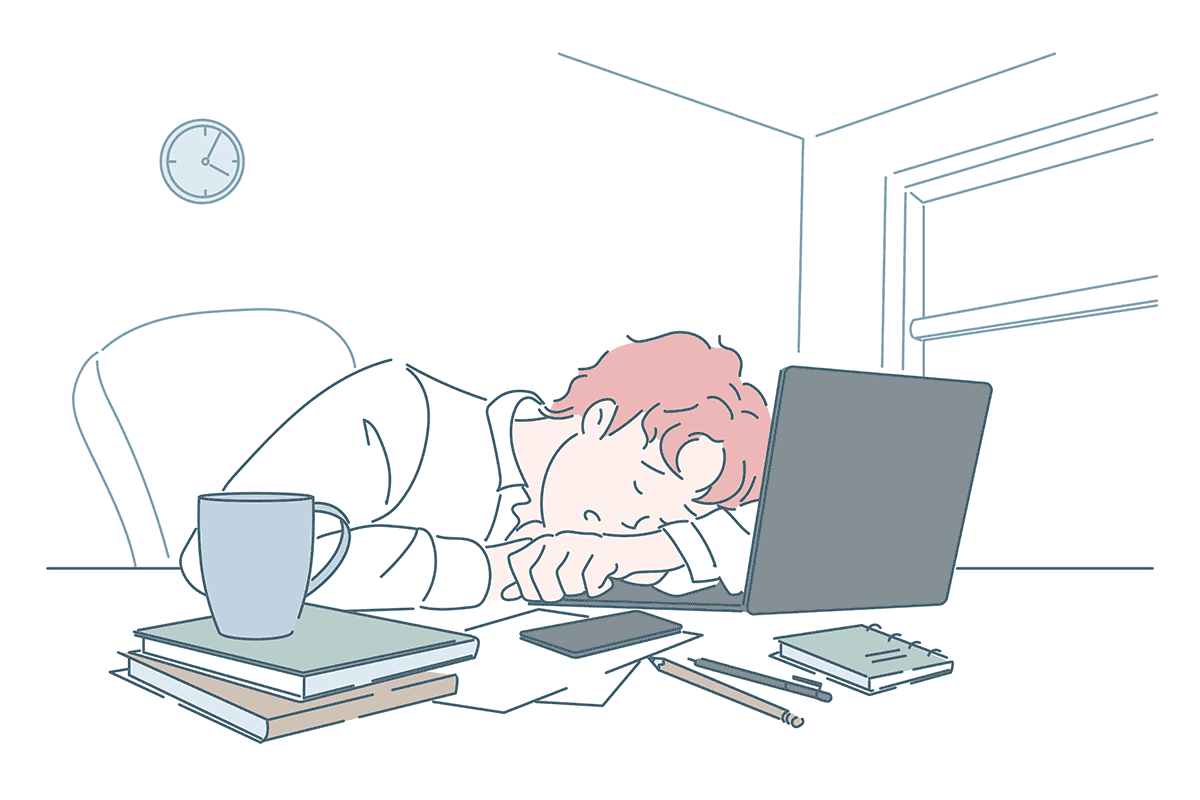

Take time for yourself
Make time to do simple activities that bring joy, comfort and boost self-esteem on a regular basis. This may include:
- reading, listening to stories or cooking.
- going for a walk, dancing or watching or participating in a sport.
- listening to music or doing craft activities.
- making a list of all the things you are grateful for (in your head or on paper).
- speaking to a friend or family member.
Maintain a healthy lifestyle
In times of crisis, a healthy lifestyle is vital to the resilience of your body and mind.

Eat a well-balanced diet and avoid skipping meals even during very busy times. Always keep healthy high-energy snacks with you, and avoid too much caffeine, sugar and junk food. Healthy foods include:
- fruits and vegetables
- pulses (or legumes)
- whole-grain cereals
- lean meats and fish
- moderate amounts of dairy food

Physical activity
Exercise can take many forms:
- walking upstairs, running, cycling, or household chores;
- stretching exercises, dancing, and yoga;
- brisk walking.

Sleep
- Turn off all devices 30 minutes before bed.
- Wake up and go to bed at around the same time each day.
- Avoid caffeine (coffee, tea and some soft drinks) in afternoons and evenings.
- Limit the use of alcohol or other substances that can affect the quality of sleep.
- Avoid daytime naps.
- Create a calm sleeping environment with a comfortable temperature and minimal noise and light, where possible.
- If you are unable to sleep get out of bed and go to another room and distract yourself for 20‒30 minutes, then return to bed.

- Stay well-hydrated.

- Do your best to rest during any downtime at work and get enough sleep between shifts as it helps you stay focused and balanced throughout the day.

- Avoid unhealthy coping behaviours such as the use of tobacco, alcohol or other substances, as they are harmful to you in the long run.

- Try your best to maintain a consistent routine as much as possible – even though that may be challenging in times of crisis
Seek professional help
Whether you are already living with a mental health condition or not, if your feelings of distress persist and it becomes difficult to cope with your daily activities at work or at home, consider seeking professional help. Remember that seeking help is not a weakness, but a sign of strength and resilience.
- Seek help from a health professional, such as your GP or a psychiatrist or therapist.
- Consider utilizing some local resources that have been developed for the COVID-19 response such as psychological support hotlines and remote counselling services.


Adhere to your treatment
If you are receiving treatment for a mental health condition, it is essential that you adhere to your treatment regimen. Remember that caring for your own mental well-being is your greatest asset in doing your job.
- Stick to your medications if you take any, and communicate with your mental health care provider about making adjustments to your regimen, if needed.
- While face-to-face psychological support may be challenging during this time, try to see if virtual counselling and psychotherapy are available.
Breathing exercise
Now, we would like to give you a breathing exercise. It takes around 5 minutes.
We are going to teach you how to breathe in a way that will relax your body and mind. It will take some practice before you really feel the benefits. You can repeat it as many times as you like.

- Before we start, try to relax your body.

- Shake out your arms and legs and let them go floppy and loose.

- Roll your shoulders back and gently move your head from side to side

- Now, place your hand on your stomach and imagine that you have a balloon in your stomach. When you breathe in you are going to blow that balloon up, so your stomach will expand. When you breathe out, the air in the balloon will also go out, so your stomach will flatten.

- Now the second step is to slow the rate of your breathing. So, we are going to take three seconds to breathe in and three seconds to breathe out.

- Breathe in … 1, 2, 3. And breathe out … 1, 2, 3.

- Repeat. You can repeat this a few times..

- Do not be too concerned about the times and the counts. Just try your best to slow your breathing down.

- Breathe slowly.

- Now slow your breathing even further. Slowly and gently, empty your lungs.

- If you start to feel dizzy or light-headed, you are breathing too deeply, too hard or too quickly.

- Now, breathe out slowly. And after your lungs are empty, silently count to three before you breathe in again. Then let your lungs refill as slowly as possible.

- Take note of the air as it flows in and out of your nostrils.

- Feel the gentle movements of your shoulders.

- Feel your chest moving in and out.

- Notice how your stomach moves in and out.

- Don’t let other thoughts in, just focus on your breathing.

- Slow down. Slowly breathe out.

- Then refocus and re-engage with the world. Take in your surroundings.
Take a moment to acknowledge that each time you practise this exercise, you are taking time for yourself, you need to take time to try and relax for the sake of your health. You can do shorter exercises that last for one or two minutes or longer exercises for five to ten minutes.
Progressive muscle relaxation
We told you a little bit about the physical aspect of stress, now, we would like to tell you how you can improve your psychological well-being with an exercise called progressive muscle relaxation. It takes between 10 and 20 minutes.
When we are experiencing a stressful situation and feeling anxious, our muscles can tense up. During this exercise, each muscle should be tensed, but not to the point of straining your body. If you have any injuries or pain, you can skip the affected areas. Pay special attention to the feeling when you release tension in each muscle and the resulting feeling of relaxation.
Let's begin

- Sit back or lie down in a comfortable position. Shut your eyes if you feel comfortable doing so.
- Begin by taking a deep breaths and feel the air filling your lungs. Hold your breath for three seconds.
Brief pause

- Release your breath slowly and let the tension leave your body.
- Take in another deep breath and hold it for three seconds.
Brief pause

- Again, slowly release the air.
- Even slower now, take another breath. Fill your lungs and hold the air for three seconds.
Brief pause

- Slowly release your breath and feel the tension leaving your body.
- Now, move your attention to your feet. Begin to tense your feet by curling your toes and the arch of your foot. Hold onto the tension for seven seconds and take note of how this feels.
5 second pause

- Release the tension in your foot. Can you feel the tension leaving your body?
- Next, begin to focus on your lower legs. Tense the muscles in your calves. Hold them tightly for seven seconds and feel the tension in your legs.
5 second pause

- Relax your legs. Can you feel the tension leaving your legs? Remember to continue taking deep breaths.
- Next, tense the muscles of your upper legs and pelvis. You can do this by tightly squeezing your thighs together for seven seconds. Make sure you tense up without putting a strain on your body.
5 second pause

- And release. Feel the tension leave your upper legs and pelvis.
- Begin to tense your stomach and chest. You can do this by sucking your stomach in. Squeeze harder and hold the tension for seven seconds.
5 second pause

- Release the tension. Allow your body to go limp. Feel the tension leaving your body.
- Continue taking deep breaths. Breathe in slowly, be conscious of the air filling your lungs. Hold it.
Brief pause

- Release the air slowly. Feel it leaving your lungs.
- Next, tense the muscles in your back by bringing your shoulders together behind you. Hold them tightly for seven seconds. Tense them as hard as you can without straining your body and hold.
5 second pause

- Release the tension from your back. Feel the tension slowly leave your body. Notice the difference in your body when you allow it to relax.
- Make a fist and squeeze. Hold it for seven seconds.
5 second pause

- Tense your arms for seven seconds. Relax your arm.
5 second pause

- Move your shoulders up and hold them in this position for seven seconds.
- Relax your shoulders. Notice how your fingers, hands, arms, and shoulders feel limp and at ease.
5 second pause

- Move up to your neck and your head.
- Turn your neck to touch your chin to the right shoulder, hold the position for seven seconds.
- Return back to the starting position and relax for seven seconds.
- Turn your neck to touch your chin to the left shoulder, hold the position for seven seconds.
- Return back to the starting position and relax for seven seconds.
- Push your chin into your chest and hold the position for seven seconds.
- Return back to the starting position and relax for seven seconds.
- Let your head tilt back as far as possible and then return back to the starting position and relax for seven seconds.
Brief pause

- Continue taking deep breaths. Breathe in slowly, be conscious of the air filling your lungs. Hold it.
- Release the air slowly. Feel it leaving your lungs.
- Now let’s move up to your face.
- Start by closing your eyes as forcefully as possible for seven seconds.
- Open your eyes and relax for seven seconds.
- Clench your jaw as hard as possible for seven seconds.
- Relax your jaw.
5 second pause
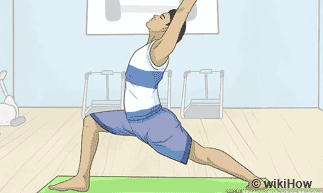
- Finally, tense up your entire body. Tense your feet, legs, stomach, chest, arms, head and neck. Tense harder, without straining your body. Hold.
5 second pause

- Now release. Allow your whole body to go limp. Pay attention to the feeling of relaxation and how different it feels from when you are tense.
- It will take some practice before you really feel the benefits. You can repeat it as many times as you like.
Making room—NOTICE and NAME
Now, many people say that when doing the progressive muscle relaxation routines or breathing exercises, they find it hard to let go of specific thoughts or feelings that keep coming back. This is normal. Why? Because trying to push away difficult thoughts and feelings often does not work very well. So instead, make room for them.
You can use the making room exercise as a helpful tool when you are struggling with a particular thought or feeling. It may seem a bit strange, but often, merely noticing that these thoughts and feelings are there, and recognizing them for what they are, helps us a little. Noticing and naming our difficult thoughts and feelings tends to take away their power and can lessen the burden they create. Noticing and naming also gives us the chance to take a step back and make choices about how we choose to respond.
We will practise this right now.

- Is there a stressful thought or feeling troubling you right now? Think about what it is. Articulate it to yourself.
- Is it a thought? Is it words or pictures, or both? If it is a feeling in your body, where exactly is it?
- Now silently say to yourself, “Here is a difficult feeling,” or, “Here is a difficult thought.” Or, “I am noticing a feeling of tightness in my chest,” or, “I am reliving painful memories,” or “I am feeling a lot of fear and sadness,” or “I am worrying about the future,” or “I have a sick feeling in my stomach.”
Pause 5 seconds

- Next, silently say to yourself, “This difficult feeling or thought is natural. This happens to many people when they are stressed. It is difficult, and I do not like it, but it is natural.”
Pause 10 seconds

- Now imagine these difficult feelings and thoughts are like the weather, and you are like the sky. Your aim now is to open up and make room for them – to let them come and stay and go in their own good time – to let them move through you, just as the weather moves through the sky.
Pause 5 seconds

- And as you do this, breathe out slowly, completely emptying your lungs.
Pause 5 seconds

- Once your lungs are empty, pause for a count of three, before very slowly breathing in again.
Pause 5 seconds

- And as you do this, imagine your breath flows into and around your pain.
Pause 5 seconds

- And it is as if you somehow open and make space around it.
Pause 5 seconds

- The idea is simply to breathe slowly and empty your lungs fully, and as you do, get a sense of making space for your pain, a sense of opening, and making room for these difficult thoughts and feelings.
Pause 5 seconds

- See if you can allow your thoughts and feelings to be present, even though you do not like them or want to experience them.
Pause 5 seconds

- See if you can stop fighting this pain and just let it be.
Pause 3 seconds

- Now take in the world around you: what can you see, hear, smell and touch?
Pause 5 seconds

- Take note that there is a world around you that you can see, hear and feel and you can choose how to interact with it.
Pause 10 seconds

- How was the exercise for you? Was it helpful? Sometimes, we must practice these exercises a lot before they are truly helpful.
Dévora Kestel (Director), Russ Harris (content creation), Kennith Carwell (project coordination and management), Sanjo Ogunseye (narration), David Wilson Alessandro Mannocchi (book production).
Geneva: World Health Organization; 2020
Grounding
We understand that sometimes you may experience intensely difficult thoughts and feelings. They are so strong that they are like a mighty storm and can easily overpower you. We are going to teach you some grounding exercises to help you during these times. Grounding yourself does not make your emotional storms disappear… It just keeps you safe until the “storm” passes.
You can use the making room exercise as a helpful tool when you are struggling with a particular thought or feeling. It may seem a bit strange, but often, merely noticing that these thoughts and feelings are there, and recognizing them for what they are, helps us a little. Noticing and naming our difficult thoughts and feelings tends to take away their power and can lessen the burden they create. Noticing and naming also gives us the chance to take a step back and make choices about how we choose to respond.
REMEMBER!
Grounding is especially useful during stressful situations or experiences. You can also practise grounding when you simply have one or two minutes available, like when you are waiting for something, or before or after an activity you do every day, like washing, eating, cooking, or sleeping. If you practise during these times, you may find that boring activities become more enjoyable, and it will be easier to use grounding later in challenging situations.
We are going to do an exercise so you can see for yourself.
Grounding exercise 1

- We are going to ask you to take several minutes to drink a single mouthful of a non-alcoholic drink, such as water, juice, tea, or coffee. And your challenge is to pay attention to everything that you do in the process of drinking.
Pause 1 second

- Get your drink. We invite you to sit straight. Please do this exercise in silence.
- Take hold of your bottle, glass or cup and observe the vessel as though you have never seen one before.
Pause 5 seconds

- Take note of the colour and shape of it.
Pause 5 seconds

- Pay attention to how the light shines through it or bounces off it.
Pause 5 seconds

- Look at its texture. Run your fingers over it, and think about how it feels.
Pause 5 seconds

- Feel the weight of it in your hand.
Pause 5 seconds

- Look at the liquid inside it … pay attention to the way the light reflects off the surface.
Pause 5 seconds

- Gently move the bottle or cup to make the liquid inside swirl around.
Pause 5 seconds

- Notice the patterns on the surface of the liquid as it swirls.
Pause 5 seconds

- Now raise it to your nose and smell it.
Pause 5 seconds

- If your beverage is tea or coffee or something else with a distinctive smell, then inhale the aroma deeply.
Pause 5 seconds

- Now raise the bottle or cup to your mouth, and rest it against your lips, and pause for a moment before drinking.
Pause 2 seconds

- And still, without drinking, notice what is happening inside your mouth … You may find saliva forming … or your mouth getting warmer … or feel an urge to drink.
Pause 5 seconds

- And in a moment — do not do it yet — we will ask you to take one small sip ... as slowly as you can … and then close your mouth again, but let the liquid stay inside your mouth without swallowing it.
Pause 2 seconds

- And so now, as slowly as you can, take a small sip ... then close your mouth, and let the liquid stay there, inside your mouth.
Pause 2 seconds

- And ever so slowly and gently, roll the beverage around inside your mouth.
Pause 3 seconds

- Feel it against your tongue and inside your cheeks.
Pause 3 seconds

- If the liquid has a taste, really take the time to savour its taste.
Pause 3 seconds

- And then, as slowly as you can, swallow it and be conscious of the sound of your swallowing.
Pause 5 seconds

- And now, coming to the end of the exercise, think carefully about where you are.
- Look around you. Name five things you can see.
Pause 2 seconds

- Listen carefully. Think about three or four things you can hear.
Pause 2 seconds

- As you breathe in the air, what can you smell?
Pause 2 seconds

- Reflect on where you are and what you are doing.
Pause 2 seconds

- Open your hands and gently run your fingers over where you have been sitting.
Pause 2 seconds

- Feel the surface under your fingers.
Pause 3 seconds

- Next time your thoughts and feelings overwhelm you, don’t pay attention to who you are with or what you are doing, try to engage in whatever it is you are doing, like you did with this exercise and see what happens.
Pause 3 seconds
Grounding
Grounding exercise 2

- So, now let’s try another brief grounding exercise.
- You can practise this exercise no matter how you are feeling right now, even if you feel fine and are not having difficult thoughts or feelings. Just follow the steps. By practising in this way, even when you feel well, you will prepare yourself for when difficult situations arise.
- Please do this exercise in silence.
- We invite you to sit straight. You might wish to close your eyes to focus more deeply on the exercise. If you do not want to close your eyes, then fix your gaze on one spot. Take a moment to think about how you are feeling and what you are thinking about.
Pause 5 seconds

- Next, find a way to slow down. Slow your breathing. Breathe in and out through your nose.
Pause 5 seconds

- Slowly press your feet to the floor.
Pause 5 seconds

- Slowly stretch your arms, or if you prefer, press your hands firmly together.
Pause 5 seconds

- Feel yourself slowing down.
Pause 5 seconds

- Now take notice of where you are. Take in your surroundings.
- What are five things you can see?
Pause 5 seconds

- What are three or four things you can hear?
Pause 5 seconds

- Breathe in the air: what is it like – warm, cool, fresh, stale, dry, or humid? What can you smell?
Pause 5 seconds

- Think about where you are and what you are doing.
- Reach out and touch something, and think about how it feels under your fingers.
Pause 5 seconds

- Stretch your body in some way. Stretch your arms or legs or back or neck.
Pause 5 seconds

- Notice that while difficult thoughts or feelings may be surfacing ‒ there is also a world around you that you can see, hear, smell and touch.
- And notice, you can now move the way you want to, and you can also choose the words you will say, and how softly or loudly you will say them.
- It is important to think about the way you influence the world around you through your actions: through what you do, and through the words you say and the way you say them.
- Now take a moment to reflect on how you feel.
Pause 5 seconds

- Hopefully, you feel a bit more grounded, less lost in your thoughts and feelings, and more connected with the world around you.
- If this did not happen for you, or if you feel a bit strange, then remember such reactions are common. Usually, with practice, these exercises will start to feel more natural and the results will be more powerful.
Pause 3 seconds
Now that we have given you more information on how to deal with stress in certain situations, maybe we can think a little bit about how to manage these situations, when possible. How? Let us tell you a bit more.
Problem management
Stress can reduce our ability to address practical problems. We may feel helpless or lack confidence in managing our problems, or possibly let our feelings of anxiety or stress get in the way of managing practical problems effectively.

Now, we are going to focus on a strategy that will help you with the practical parts of your problem. It is called “managing problems”. We aim to help you see what elements of the problem you can or cannot influence. You might not always be able to solve the whole problem, but instead, you might be able to influence it somehow or change the way you are responding to address the problem, which can help reduce feelings of negativity.
Managing problems is a structured strategy that can help us solve and manage practical problems, so it is a tool that can be used in many different situations. Below are the steps.

List problems

Choose a problem

Define the problem
Think of ideas
Choose ideas
Think of action plans

Review
| Surmountable problems: Fight less with my husband, Improve my mood | Insurmountable problems: Find my husband a job and reduce my husband’s anger |
|---|---|
| Choose a solvable problem |
Fighting with my husband each day. |
| Define the problem | I would like to reduce the number of arguments I have with my husband. We fight every day. |
| Possible ways of managing the problem (How can I solve or reduce the problem?) |
|
| Helpful solutions |
|
| Plan (how to apply the solution you have chosen) |
Tuesday: Visit trusted friend at 10:00 am after taking the children to school. Talk with friend about fighting with my husband. Thursday: When visiting my mother, mention to her that I have been having some problems with my husband. Ask her what she would do in my situation. Saturday morning: Husband will be home. Tell him that I have been feeling very unhappy because we have been fighting a lot. Wait for his response. |
| Review (after the plan has been completed) |
Trusted friend was very supportive. Although she did not have any new advice, speaking to her helped. I felt better afterward, and my mood improved a little. We also talked about other things that gave me a break from feeling sad. My mother said that I need to speak with my husband but be understanding of his frustration and not blame him for losing his job. She helped me practise how I would talk to him, so I felt more confident. I spoke to my husband the same evening because I felt confident about approaching him. He agreed with me, but we are still not sure what to do about it. We even had two big fights this week, but this is less than before, and we discussed the problems afterward because of the previous conversation we had. |
You can also use the following approach
STOP
Define and identify the problem
- Fighting with my husband each day
THINK
Think of as many different ways as you can to manage that problem.
Try to come up with at least two or three different options.
- Do nothing.
- Tell him to try harder to find a job.
- Tell my husband that I am not happy.
- I have asked my mother for advice, and this was helpful. I also told my husband about something that was making me angry, and he changed his behaviour.
- My friends can be helpful. They always listen to me and understand me.
- I don’t know.
- Do nothing.
- Tell my husband that I am not happy.
- Talk to my friend about this.
The following questions may help: What have you done in the past to overcome problems like this?
Is there someone you can go to who can help in managing this problem (e.g., friends, loved ones or organizations)?
Do other people you know have similar problems? How have they managed?
What are the pros and cons of each of your possible solutions?
Pros: I cannot think of anything.
Cons: Nothing will change.
- Tell him to try harder to find a job
Pros: I will feel that I expressed myself.
Cons: It might make him angrier and not solve the problem.
Pros: He will know how I feel, and maybe understand that I hope to change the situation and be happy again with him.
Cons: He might become more upset.
Pros: Friend will be supportive and maybe help me think of ways to deal with the problem.
Cons: I can’t think of any.GO
Choose one option from your list of possible solutions to try out.
Make sure the option is safe for you and others if you put it into action.
You can break down your solution into practical steps.
If the solution you choose doesn’t help, you can go back to the list and try another solution.
Steps:
1. I am going to call friend tomorrow.
2. I will tell friend how I feel.
3. I will ask friend for support.
4. I will listen to what friend thinks about the problem.
5. I am going to tell my husband that I am not happy.
6. After tomorrow: Husband will be home. Tell him that I have been feeling unhappy because we are often fighting. Wait for his response.
Now, the last section on this page is about using substances. These substances include alcohol, cannabis, cocaine, amphetamine-type stimulants, inhalants, sedatives or sleeping pills, hallucinogens, and/or opioids.
Your own strengths and coping strategies
We are here to use this moment as an opportunity to remind you of something that many people tend to forget when they are under stress:
You have strengths. You have resilience. You have many coping strategies.

You have the strategies that helped you with many things in your life so far, until this very point. Remember these strategies. They can help you feel more energetic and regain a sense of control. These strategies are different tools that you can use to deal with difficulties.
You can use a paper and pencil to reflect on the following questions. They are designed to help you identify your personal coping strategies.

- Think of a time in which you were going through some difficulties. Can you remember how you were able to overcome them?
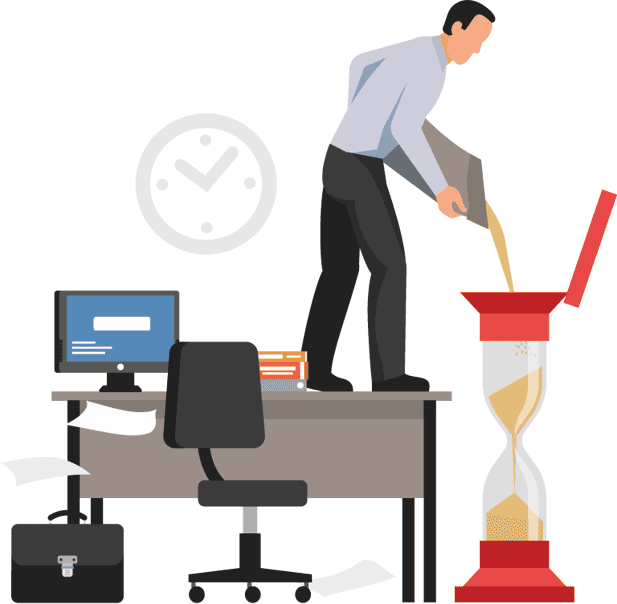
- Think about it a little more. What do you think helped you the most in such times?

- This might be a little difficult. So, if you cannot think of a particular time, think about the following: If your problem or suffering decreases, how might this be good for other areas in your life? e.g. your relationships, your work, your obligations, your sense of self.

- Visualize your day. How would your day look if your emotional well-being improved?

- To achieve this vision, how do you think you can help yourself? What kind of support or resources do you have?
Some positive coping strategies include:
Getting enough rest
Eating healthily and drinking plenty of water
Talking with family, friends or other community members
Discussing problems with someone you trust
Engaging in activities that help you relax
Doing physical exercise
Get going, keep doing!
We are now getting towards the end of the interventions to help you manage stressful and difficult situations. Remember becoming active can help you start to feel better, even though you may not feel like being active.

Starting the activity is the hardest. We assure you that many people find that once they start doing activities, it gets easier to keep going. So, now to provide you with our very last tool, we would like to invite you to do the following.
Think about the thing you used to do before you were feeling this way, what is one pleasant or enjoyable activity that you could start doing again or do more often?
Think about the thing you used to do before you were feeling this way, what is one pleasant or enjoyable activity that you could start doing again or do more often?
Think about when you were feeling better, what is one task, at home, or work, that you were regularly doing that you are no longer doing or that you do less?
Now, the idea is that you spend some time scheduling in these tasks for you to start doing them again over the next week.
- Choose a task.
- Break the task into steps.
- Choose a specific day and a time.
- Write this time down.
- Remember to start with small goals.
- Setting a reminder might be helpful.
| Time | Sunday | Monday | Tuesday | Wednesday | Thursday | Friday | Saturday |
|---|---|---|---|---|---|---|---|
| Early morning 7:00 am to 10:00 am | |||||||
| Mid-morning 10:00 am to 12:00 pm | |||||||
| Lunchtime 12:00 noon to 2:00 pm | |||||||
| Afternoon 2:00 pm to 5:00 pm | |||||||
| Evening 5:00 pm to 8:00 pm | |||||||
| Late evening 8:00 pm to 11:00 pm |

Eat a favorite meal or food

Read a book
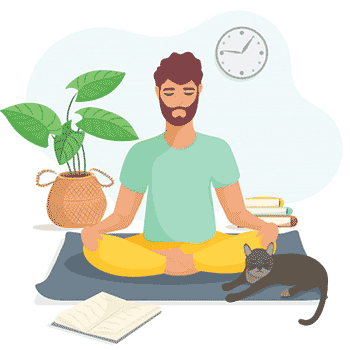
Relax and meditate

Pray

Cook
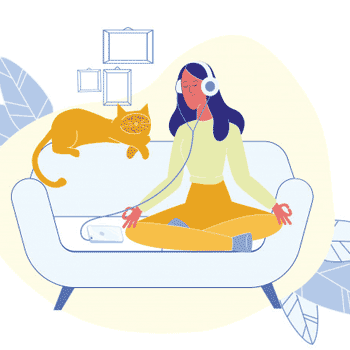
Listen to music

Sing or play music

Dance

Do some art

Read magazines or newspapers

Write a poem, journal or story

Look at old photos
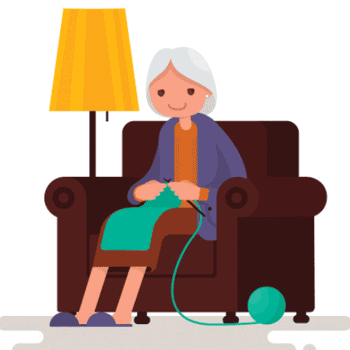
Weave or knit.
Connect

Call a friend or family member

Prepare a gift for someone

Play a game with a friend or family member on the Internet

Think of a fun activity to virtually engage in with a friend or family member
Self-care

Get out of bed at the same time you used to

Take a shower

Change your clothes

Brush your hair
Achieve

Wash clothes

Sweep the floor

Make your bed

Tidy an area in your house

Cook a meal

Mend clothes

Read mail

Help children with school work
REMEMBER!
You have the capacity to overcome the difficulties and change the way you handle them.
The more you practise the exercises, the easier they will become – don’t give up!
Do seek help from a mental health professional – we all need help sometimes.
Resources
About the virus
More information about COVID-19
Questions and answers about the virus
About coping with different types of difficulties
Mental health support during COVID-19
About family and children
Helping children cope with stress
COVID-19 and sexual and reproductive health
About working and learning at a distance
COVID-19: Recommendations to plan distance learning solutions
About working on the front line
Emergency responders’ self-care
For staff, volunteers and community workers
❯ Next ❮ Previous ❮ Previous


